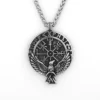What is the evolution of castles in Wales and how have they impacted Welsh history and culture?
Castles have been a prominent feature in Welsh history and culture for centuries. The evolution of castles in Wales spans many centuries and styles of architecture, from early fortifications to Baroque. The design and construction of Welsh castles have changed over time, reflecting the changing political, cultural, and social landscape of Wales. In this article, we will explore the historical and cultural significance of Welsh castles and their evolution over time.

Early Castles in Wales
| Name of Castle | Location | Year of Construction | Architectural Style | Current Status |
|---|---|---|---|---|
| Caernarfon Castle | Gwynedd | 1283 | Medieval | UNESCO World Heritage Site |
| Conwy Castle | Conwy | 1283 | Medieval | UNESCO World Heritage Site |
| Cardiff Castle | Cardiff | 1081 | Baroque | Museum and Tourist Attraction |
| Castell Coch | Cardiff | 1875 | Gothic Revival | Museum and Tourist Attraction |
| Penrhyn Castle | Bangor | 1822 | Tudor Revival | National Trust Property |
| Powis Castle | Welshpool | 1200s | Medieval | National Trust Property |
| Criccieth Castle | Gwynedd | 1230s | Medieval | Ruins |
| Dolwyddelan Castle | Conwy | 1200s | Medieval | Ruins |
The early Welsh castles, such as Dinas Emrys and Castell Dinas Bran, were constructed in the 11th century by Welsh princes to protect their territories from invaders. These castles were typically built on high ground or near water sources and were made of wood and earth. They were designed to be easily defended and were not intended to be permanent residences. The most common type of early Welsh castle was the Motte and Bailey castle, which consisted of a raised mound (the Motte) with a wooden fortification on top and an enclosed courtyard (the Bailey) at the base.
Evolution of Castles in Wales
- The evolution of castles in Wales spans from early fortifications to Baroque architecture.
- Castles in Wales have a significant historical and cultural significance including their role in Welsh identity and heritage.
- The outline covers early, Norman, medieval, Tudor, Stuart, and ruined castles in Wales, their characteristics, architecture, and political and cultural significance.

Norman Castles in Wales
The Norman invasion of Wales in the 11th century introduced new architectural styles and building techniques, including the use of stone. This allowed for the construction of larger and more elaborate castles, such as Chepstow Castle and Pembroke Castle. Norman castles in Wales were primarily used for military purposes but also served as symbols of Norman power and control. They were typically built on strategic sites, such as high ground or near rivers, and were designed to be imposing and intimidating.

Medieval Castles in Wales
During the medieval period, there were significant changes in castle architecture in Wales. Concentric castles, such as Beaumaris Castle and Harlech Castle, were introduced, allowing for greater defense capabilities. Medieval castles in Wales were typically built for both military and domestic purposes. They were designed to provide protection for the inhabitants and to project power and prestige. Examples of medieval castles in Wales include Caerphilly Castle and Raglan Castle, which had distinctive features such as moats, drawbridges, and elaborate gatehouses.

Tudor Castles in Wales
Tudor castles in Wales were typically built for both military and domestic purposes and were designed to reflect the changing political and cultural landscape of the time. The Tudors introduced decorative elements to castles, such as ornate carvings and plasterwork, which reflected the growing importance of aesthetics in castle building. Examples of Tudor castles in Wales include Penrhyn Castle and Powis Castle. These castles had a number of distinctive features, including their elaborate gatehouses and decorative elements such as plasterwork and carvings. Tudor castles in Wales were important symbols of Tudor power and control.
Stuart Castles in Wales
During the Stuart period, there were significant changes in castle design in Wales, with the influence of Baroque architecture becoming more prominent. Baroque architecture was characterized by its elaborate decoration and use of curves and asymmetrical shapes. Stuart castles in Wales were typically built for both military and domestic purposes and were designed to reflect the changing political and cultural landscape of the time. Examples of Stuart castles in Wales include Cardiff Castle and Llancaiach Fawr. These castles had a number of distinctive features, including their elaborate decoration and use of Baroque architectural elements.
Decline of Castles in Wales
The decline of castles in Wales can be attributed to a number of factors, including the rise of firearms and the end of the Welsh Wars. Many castles in Wales fell into disrepair and were left to decay. However, in recent years, there has been a concerted effort to preserve and restore these historic structures. Ruined castles in Wales, such as Denbigh Castle and Dolwyddelan Castle, are important historical and cultural landmarks and serve as a reminder of Wales’s rich history and heritage.
Case Study: The Importance of Preservation Efforts at Caerphilly Castle
Preservation efforts at Caerphilly Castle highlight the significance of maintaining Welsh castles as cultural and historical landmarks. Caerphilly Castle, one of the largest castles in Wales, was built in the 13th century and played an important role in Welsh history. The castle was subjected to numerous sieges and attacks throughout its history, leading to damage and decay.
In the 20th century, preservation efforts were undertaken to restore and maintain the castle’s structural integrity and historical significance. The preservation project included extensive repairs and renovations, including stabilizing the walls and towers, repairing the moat, and restoring the castle’s entrance.
These efforts have not only preserved the castle as a historical landmark, but also as a cultural and economic asset for the surrounding community. The castle is now a popular tourist destination, drawing visitors from around the world to experience Welsh history and architecture firsthand.
The preservation efforts at Caerphilly Castle demonstrate the importance of maintaining Welsh castles as cultural and historical landmarks. By investing in their preservation, we can ensure that future generations can appreciate and learn from the important role that castles played in Welsh history and identity.
Conclusion
The evolution of castles in Wales is a reflection of Welsh history and culture. Welsh castles have played a significant role in the country’s military, political, and cultural history, and are important symbols of Welsh identity and heritage. The preservation and restoration of these historic structures is essential to ensure that they continue to be enjoyed by future generations. By understanding the evolution of castles in Wales, we can gain a greater appreciation for their historical significance and cultural value.
FAQs
Q. Who built the first castles in Wales?
A. The Normans built the first castles in Wales.
Q. What is the oldest castle in Wales?
A. Dinefwr Castle is the oldest castle in Wales.
Q. How did the castles in Wales evolve over time?
A. Castles in Wales evolved from wooden fortifications to stone fortresses.
Q. What is the most famous castle in Wales?
A. Caernarfon Castle is the most famous castle in Wales.
Q. How did castles in Wales change during the Tudor period?
A. Castles in Wales were converted into comfortable homes during the Tudor period.
Q. Objection: Why should I care about the evolution of castles in Wales?
A. Learning about the evolution of castles in Wales can provide insight into the history and architecture of the region.





